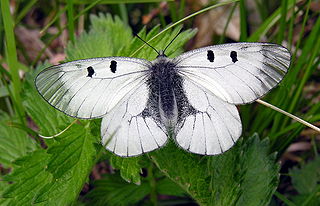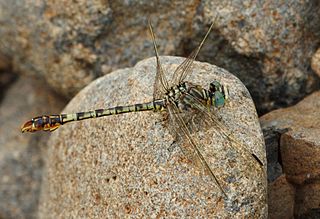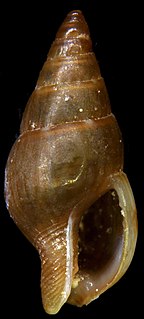
Wolf spiders are members of the family Lycosidae, from the Ancient Greek word "λύκος" meaning "wolf". They are robust and agile hunters with excellent eyesight. They live mostly in solitude and hunt alone, and do not spin webs. Some are opportunistic hunters pouncing upon prey as they find it or even chasing it over short distances. Some wait for passing prey in or near the mouth of a burrow.

Jumping spiders or the Salticidae are a family of spiders. As of 2019, it contained over 600 described genera and over 6000 described species, making it the largest family of spiders at 13% of all species. Jumping spiders have some of the best vision among arthropods and use it in courtship, hunting, and navigation. Although they normally move unobtrusively and fairly slowly, most species are capable of very agile jumps, notably when hunting, but sometimes in response to sudden threats or crossing long gaps. Both their book lungs and tracheal system are well-developed, and they use both systems. Jumping spiders are generally recognized by their eye pattern. All jumping spiders have four pairs of eyes, with the anterior median pair being particularly large.

Huntsman spiders, members of the family Sparassidae, are known by this name because of their speed and mode of hunting. They are also called giant crab spiders because of their size and appearance. Larger species sometimes are referred to as wood spiders, because of their preference for woody places. In southern Africa the genus Palystes are known as rain spiders or lizard-eating spiders. Commonly they are confused with baboon spiders from the Mygalomorphae infraorder, which are not closely related.

The Araneomorphae are an infraorder of spiders. They are distinguished by having chelicerae (fangs) that point diagonally forward and cross in a pinching action, in contrast to the Mygalomorphae, where they point straight down. Most of the spiders that people encounter in daily life belong to the Araneomorphae.

The clouded Apollo is a butterfly species of the family of swallowtail butterflies (Papilionidae) found in the Palearctic realm.
Philonesia is a genus of air-breathing land snails or semislugs, terrestrial pulmonate gastropod mollusks in the family Helicarionidae.

Crenigomphus is a genus of dragonfly in the family Gomphidae. It contains the following species:

Tarantulas comprise a group of large and often ″hairy″ spiders of the family Theraphosidae. Currently, about 1,000 species have been identified. The term tarantula is usually used to describe members of the family Theraphosidae, although many other members of the same infraorder (Mygalomorphae) are commonly referred to as "tarantulas" or "false tarantulas". Some of the more common species have become popular in the exotic pet trade. Many New World species kept as pets have urticating hairs that can cause irritation to the skin, and in extreme cases, cause damage to the eyes.

Astyris is a genus of sea snails, marine gastropod mollusks in the family Columbellidae, the dove snails.

Spiders are air-breathing arthropods that have eight legs, chelicerae with fangs generally able to inject venom, and spinnerets that extrude silk. They are the largest order of arachnids and rank seventh in total species diversity among all orders of organisms. Spiders are found worldwide on every continent except for Antarctica, and have become established in nearly every habitat with the exceptions of air and sea colonization. As of July 2019, at least 48,200 spider species, and 120 families have been recorded by taxonomists. However, there has been dissension within the scientific community as to how all these families should be classified, as evidenced by the over 20 different classifications that have been proposed since 1900.
Phyllobrostis is a genus of moths in the family Lyonetiidae.
The World Spider Catalog (WSC) is an online searchable database concerned with spider taxonomy. It aims to list all accepted families, genera and species, as well as provide access to the related taxonomic literature. The WSC began as a series of individual web pages in 2000, created by Norman I. Platnick of the American Museum of Natural History. After Platnick's retirement in 2014, the Natural History Museum of Bern (Switzerland) took over the catalog, converting it to a relational database.
Psechrus torvus is a species of spider of the genus Psechrus. It is native to India and Sri Lanka.
Psechrus is a genus of cribellate araneomorph spiders in the family Psechridae, and was first described by Tamerlan Thorell in 1878.
Psechrus tauricornis is a species of spider of the genus Psechrus. It is endemic to Sri Lanka.
Psechrus zygon, is a species of spider of the genus Psechrus. It is endemic to Sri Lanka.
Acontius is a genus of wafer trapdoor spiders that was first described by Ferdinand Karsch in 1879.








